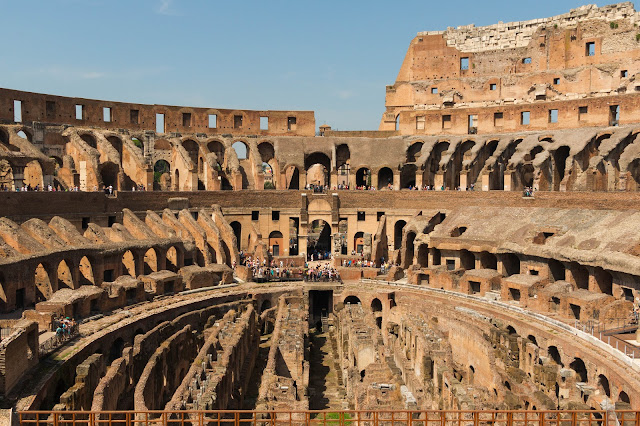10 Interesting Facts About the Colosseum
1. ITS ORIGINAL NAME WAS THE FLAVIAN AMPHITHEATER.
The Colosseum was commissioned around 70 CE by the Emperor Vespasian and opened by his son Titus in 80 CE. Along with Vespasian’s son, Domitian, who ruled from 81-96, the three were known as the Flavian Emperors, and the Colosseum was known in Latin as the Ampitheatrum Flavium.
 |
| Outside look of the Colosseum |
2. The West Exit was called the Gate of Death because this was the exit that dead gladiators were carried out from.
3. IT WAS BUILT ON A FORMER LAKE.
Nero’s pleasure palace, the Golden House (Domus Aurea), was constructed after the Great Fire of 64, and it included an artificial lake. After Nero's suicide in 68 CE and a short period of civil wars, Vespasian became Emperor in 69 CE and dedicated a new pleasure palace for the people of Rome. Nero's Golden House had its ornaments (ivory, marble, and jewels) stripped, was buried in dirt, and the Baths of Trajan were built atop the site. The lake was filled in and became the site of the Colosseum.
4. The arena had 36 trap doors for special effects, as well as many underground passages and rooms to hold wild animals and gladiators before the games began.
 |
| Inside look of the Colosseum |
5. The Colosseum had a velarium, a type of awning used in Roman times. This pulled over the top of the seating area to shade the spectators and protect them from the scorching sun.
6. The very first games at the Colosseum, held in 80AD by Emperor Titus, lasted for 100 days and there were over 3000 gladiator fights during them. The very last gladiatorial games were held in 435AD.
7. IT WAS THE LARGEST AMPHITHEATER EVER BUILT.
The Colosseum is a freestanding structure composed of concrete and stone, unlike the majority of amphitheaters at the time, which were commonly dug into hillsides for support. Its shape is roughly elliptical and measures 615 feet long, 510 feet wide, and 157 feet high, making it the largest amphitheater in the Roman world and the biggest ever constructed.
8. The wooden floor of the Colosseum was removed and the lower cells would be filled with water for mock naval battles to take place. They weren’t quite as popular as the gladiator battles, so eventually were moved elsewhere and the wooden floor became permanent.
9. Natural disasters and vandalism destroyed approximately two-thirds of the Colosseum. But it was the 847 AD and 1231 AD earthquakes that did the most damage that you can see today.
10. The Colosseum appears on the reverse of Italy’s five cent Euro coin. Bonus fun fact: Countries in the Euro Zone can mint their own coins and important monuments from their country of issue appear on their reverse.
⏺ By-the-way, You can always find more world's most famous landmarks by downloading our quiz game for free where you can find challenge&adventure together.



Post a Comment